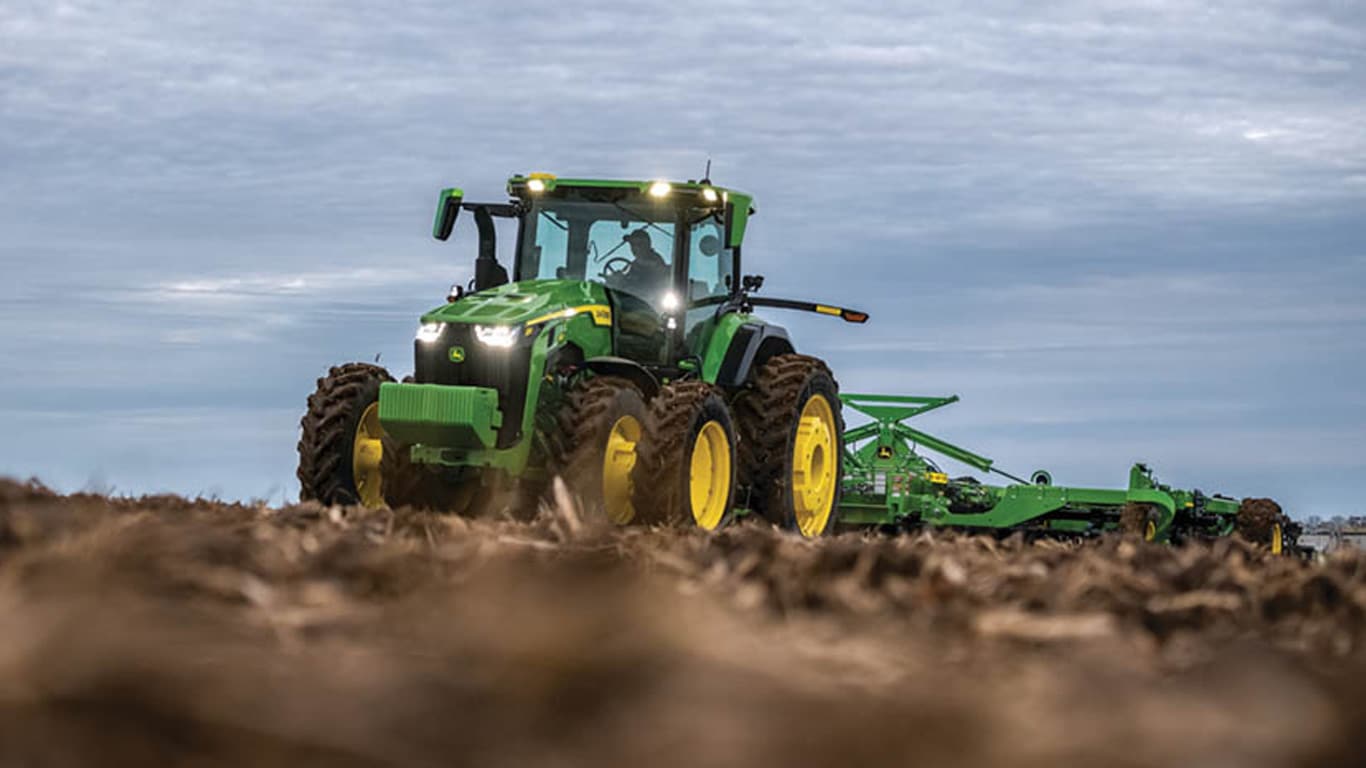Choosing a farm tractor requires potential buyers to take certain factors into account – this includes the type of transmission that they’d like to work with. And while this could seem intimidating to those who are not aware of their options, let alone what each option is capable of, we are here to help.
Here, we outline the differences between PowerShift transmissions and intelligent variable transmissions (IVT) and provide you with the ability to quickly locate the machine that’s right for you.
What Is a PowerShift Transmission, and How Does It Work?
A PowerShift transmission uses friction plates to transfer an engine’s power to the tractor’s drive axles, similar to any other conventional gearbox. However, what makes this transmission option stand out is its ability to allow operators to shift through a large number of gears without needing to move the clutch. This is achieved via a number of multi-plate wet clutch packs, which are comprised of multiple disks that are pushed together with a hydraulic piston and then released by a spring when the pressure is removed. When operators shift gears, hydraulic pressure is applied via either an electronic or mechanical valve that engages the clutch for the correct gear located on a main rotating shaft.
Used Tractor Models with Powershift Transmission
John Deere 6 Series
John Deere 7 Series
John Deere 8 Series
John Deere 9 Series
Other Tractors
How PowerShift Transmissions Enhance Tractor Operation
When driving a tractor with a PowerShift transmission, operators will quickly realize the benefits of this feature. With a full PowerShift transmission, operators can move through all gears without clutching. And even with a semi-PowerShift, which requires clutching to shift ranges, operators can shift two or more speeds without clutching. Because of these capabilities, tractor operators can focus more on the task at hand rather than switching gears.
John Deere PowerShift Controls
First introduced in 1994, the automatic PowerShift transmission from John Deere delivers the strength operators need to handle sudden, high-torque power loads while still maintaining responsive, application-based shifting. This transmission option uses a single-lever gear selector, which is conveniently located on the CommandARM™ joystick, and provides full power shifts for on-the-go shifting. This means that operators do not need to stop or clutch when changing gears or shifting between forward and reverse. And thanks to a patented, closed-loop shifting technology, the John Deere PowerShift transmission can evaluate several inputs to ensure it is providing a high-quality shift.
What Is an IVT Transmission, and How Does It Work?
An Intelligent Variable Transmission, or IVT, performs continuous shifts as the operator drives their machine. It also changes ratios quicker than a traditional automatic transmission, allowing power to get the wheels much faster than the latter. This ensures a smooth and responsive drive to maximize comfort.
This option features a fully-integrated Electronic Management System that allows the machine’s engine to communicate 100 times a second with the transmission, ensuring maximum efficiency at all times, regardless of speed. Further, because the machine’s operating conditions are being constantly monitored and relayed to the Electronic Management System, the latter can make necessary adjustments based on whether the tractor is in a light- to no-load or loaded condition.
Used Tractor Models with IVT Transmission
John Deere 6 Series
John Deere 7 Series
John Deere 8 Series
John Deere IVT
The John Deere AutoPowr/IVT features intuitive controls that allow operators to move from 0.03 mph (50 meters/hr) to 26 mph (40 km/hr) and any speed in between without issue. Operators do not need to clutch when starting or stopping the machine, and the AutoClutch-integrated footbrake performs like the brake in a car.
The John Deere IVT selector has four positive detent positions:
- Position 0, ”Off” – Used for some special applications
- Position 1, “Automatic mode” – Mainly used for PTO-powered applications
- Position 2, “Automatic mode” – Used for heavy draft and tillage applications or when hydraulic flow is needed
- Position 3, “Automatic mode” – Used for transport and light tillage applications
John Deere IVT vs. PowerShift
The IVT and automatic PowerShift transmissions from John Deere each offer unique application advantages. When choosing between these options, operators should carefully consider what they need for their specific applications.
- Working Speeds: PowerShift transmission hosts 16 forward gears, while IVT has an infinite speed selection from 0.05 km/h (.03 mph( to 50 km/h (26 mph).
- Creeper Speeds: PowerShift does not offer creeper speeds. IVT has speeds as slow as 50 m/h (164 ft/h).
- Ease of Use: PowerShift has two controls (gear selector and throttle). IVT provides automatic control of engine power and ground speed.
- Comfort: The PowerShift transmission smooth shifts thanks to Deere's closed-loop shift logic. IVT has a seamless (stepless) speed adjustment.
- Heavy Draft Work: PowerShift is a highly-efficient mechanical transmission which provides top-notch power transfer, operator determined use of power bulge and torque curve. IVT offers the ability to provide maximum power and to adjust speed automatically as required under all load conditions.
- Light Draft Work: PowerShift offers manual throttle control for fuel efficiency. IVT offers an automatic lowering of engine rpm under light load conditions.
- Variable Draft Work: PowerShift transmission allows for manual control of engine rpm, automatic gear control with Automatic PowerShift (APS). IVT provides automatic control of engine rpm and ground speed for maximum efficiency and productivity.
- Transport: PowerShift is a highly-efficient mechanical option for excellent pulling power (up to 26 mph at full throttle). IVT provides speeds of 26 mph, with an option of 31 mph at reduced engine rpm.
Choosing the Best Transmission for Your Operation
Deciding between a PowerShift transmission and IVT option can seem intimidating but with the right information, it can become much easier. By understanding the differences between these two transmission options, as outlined above, you can better determine what you need to get the job done.
Contact your local dealer to ask about PowerShift and IVT Transmissions from Deere.
